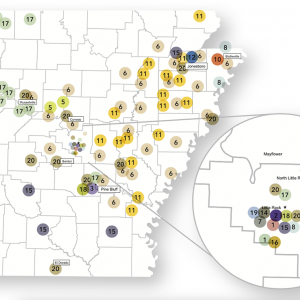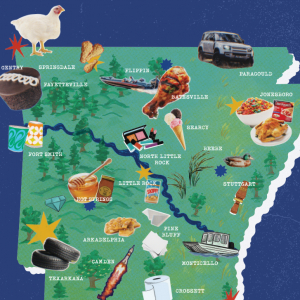Award Letters 101: How To Make Sense of the Dollars
By NEXT Staff on Thursday, September 9, 2010
Seniors, you’re going to love the first part of April. By then, your mailboxes will seem like money portals as financial aid award letters start arriving from the colleges to which you applied. But before your eyes become clouded with dollar signs, know that all Benjamins are not created equal. All those words next to each amount mean something, and you need to understand them so that you know what and how much to accept. Use this financial-aid-dollar dictionary before you make any decisions.
Good Money
Awards that come with the most responsibility
Unsubsidized loans: Welcome to the real world – you’ll be charged interest on this loan the minute you take it out. Pay monthly, quarterly or “capitalize” the interest, which adds it on to the original loan. Then, once you’re out of school, you’ll be charged interest on the loan amount plus the accruement.
Stafford loans: These loans can either be unsubsidized or subsidized, and subsidized loans are the more desirable type – see our “better money” category. The reason we ranked both types of Stafford loans here is because they’re less desirable than Perkins loans. Why? Stafford loans carry a higher interest rate.
Better Money
Awards with favorable terms
Subsidized loans: You’ll like this word – it means that you don’t pay interest while you’re in school at least half-time. Drop below that enrollment level, drop out or graduate, and interest starts accruing after a grace period. How long is that? Six months for a Stafford Loan, nine months for a Perkins Loan. You’re also not responsible for interest when your loan is in deferment – a temporary suspension of payments for specific situations. P.S. Subsidized loans are awarded based solely upon need.
Perkins loans: All Perkins loans are subsidized, so they’ve got that going for them. And when you do become responsible for the interest, it’s only 5 percent. These loans are awarded to students with exceptional financial need using government funds that your school doles out.
PLUS loans: Why does this type of loan fall under our “better money” category? Because your parents take it out and are ultimately responsible in the eyes of the lender.
Work-study programs: Sure, you have to earn this money (and no more than this amount) at a job on campus, but this way you’ll know the value of a dollar. Think of it this way – whatever you earn is that much less debt you’ll have upon graduation.
Best Money
Awards with no strings attached
Pell Grant: It’s a grant, so it’s your money, free and clear – you don’t pay it back. The maximum award for 2010-11 is $5,550. The amount you get is based on need (and you have to demonstrate financial need to qualify) and on cost of attendance.
Supplemental Educational Opportunity Grant: These are for students with the most financial need and range from $100-$4,000 per year.
Scholarships: Everyone knows scholarship money doesn’t have to be prepaid. What you might not know is that if you’ve received any outside scholarships (ones awarded by non-governmental sources outside the college) you have to let your college of choice know. Unfortunately, federal regulations require the school to reduce your need-based aid package, but there’s some flexibility in how they do this. Contact your school’s financial aid office and ask about their outside scholarship policy.
Other Types of Financial Assistance
State Teacher Assistance Resources (STAR) Program: Want to teach math, science, special education, foreign languages or another subject that has a shortage of teachers in Arkansas? Willing to teach in an area of Arkansas that has a critical shortage of teachers? If you answered “yes” to either question, you may be eligible for up to $6,000 per year in forgivable loans for a five-year education degree program. Call the Arkansas Department of Higher Education at (800) 547-8839 for more information.
Arkansas Technical Careers Student Loan Forgiveness Program: If you plan to graduate with a certificate or degree in manufacturing, computer/information technology or biomedical/biotechnology from a qualified post-secondary institution in Arkansas, you could get up to $2,500 annually for four years to repay your student loans. Fill out an “Intent to Apply” form for the program once you declare your major – funds are limited. Forms and information on stipulations can be found at DWE.Arkansas.gov/LoanForgiveness/atcslfp.htm.
Q&A
What changes did the federal government recently make to the student lending process?
The government basically cut out the middle man. Private banks no longer participate in collegiate financing. Technically speaking, the Federal Family Education Loan Program no longer exists. Instead, all loans are now part of the Federal Direct Loan Program.
How will I be affected?
“Students really shouldn’t notice much of a difference,” according to Phillip Blevins, the University of Arkansas at Fayetteville’s Associate Director of Financial Aid. “The main difference is you no longer have to choose a lender, so it should actually be somewhat simpler now.”
Why were changes made anyway?
Partly to give you a better shot at free money. Private banks collected fees for acting as intermediaries in providing loans to college students. Now they won’t. Instead, that money – about $68 billion over the next 11 years – will be used to:
- make it easier for students graduating from high school in 2014 and later to repay their outstanding loans after graduation.
- expand the Pell Grant program.
How’s it going to be easier to repay my loans?
Beginning in 2014, students will be able to cap repayments at 10 percent of income above a basic living allowance instead of 15 percent. And if you make all your payments on time, your balance will be forgiven after 20 years instead of 25 years – or 10 years if you go into public service fields like teaching, nursing or military service.
How will Pell Grants be expanded?
By 2017, the maximum grant will increase $425 to $5,975 to keep up with inflation, according to the White House. Additionally, another 820,000 grants will be provided by 2020.















